Dinosaurs are a diverse group of reptiles that first appeared during the Triassic period, around 230 million years ago. They dominated terrestrial ecosystems for over 160 million years, until the end of the Cretaceous period about 65 million years ago.
Wait… terrestrial ecosystems, so then what about flying dinosaurs?
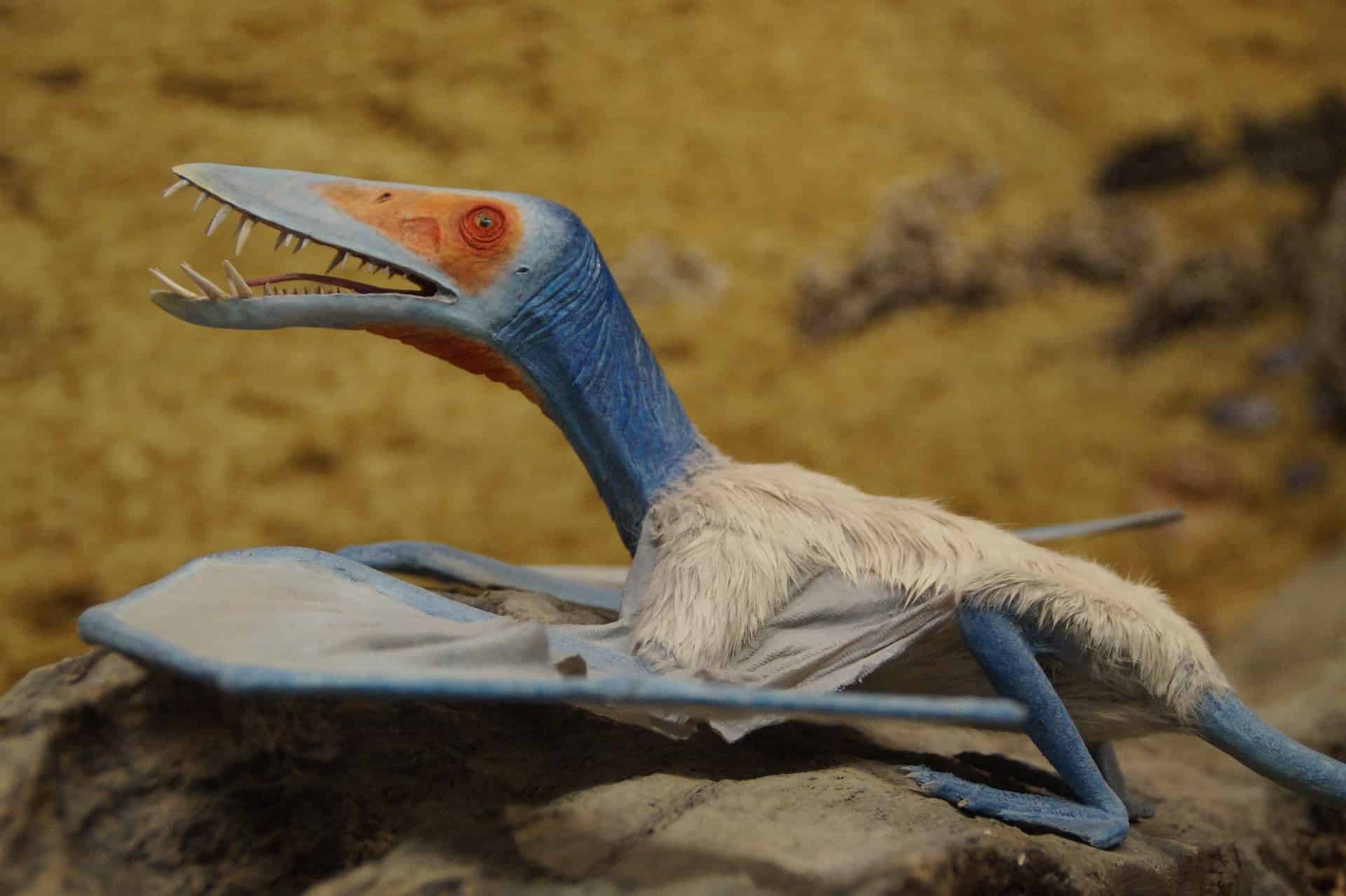
Flying dinosaurs don’t exist, if we’re being strict about it. They’re not really dinosaurs because dinosaurs, by definition, are land-based creatures. However, some reptiles that coexisted alongside the dinosaurs could fly.
Are they flying dinosaurs? No. But they’re flying, dinosaur-related, reptiles — and that’s good enough for me.
Imagine glancing up at the sky and spotting not just birds or planes, but actual reptiles soaring high above you. Sounds like something out of a science fiction movie, right? Well, let’s take you on a journey through time, back to an era where ‘winged dinosaurs’ roamed the sky.
‘Winged Dinosaurs’: The Pterosaurs
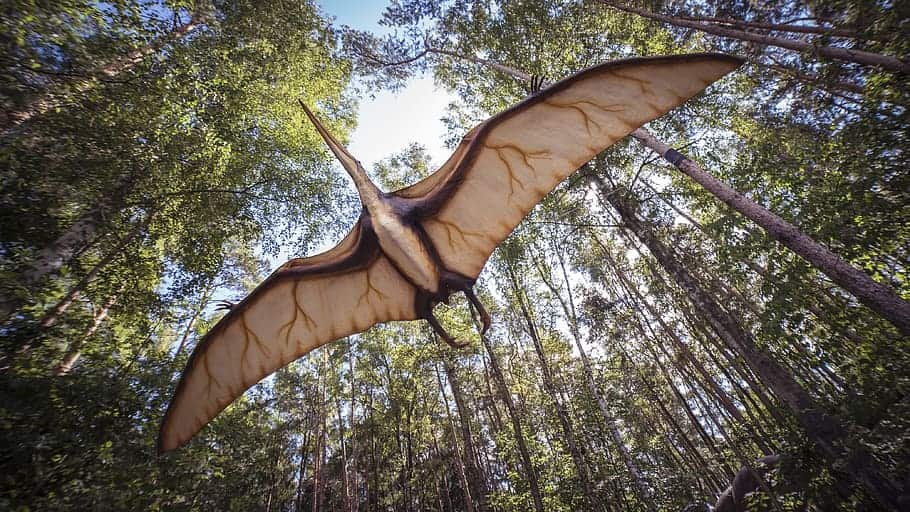
The creatures people usually refer to when they’re talking about ‘flying dinosaurs’ are pterosaurs, close relatives of dinosaurs. These airborne reptiles captivate us, but they are more than just creatures of lore or the silver screen. They were once as real as the birds that now dominate our skies. If you want to get technical, pterosaurs and dinosaurs diverged from a common ancestor during the Late Triassic period, over 200 million years ago.
Pterosaurs were a diverse group, with many species adapted to different niches and habitats. They had different diets, reflecting their lifestyles and habitats. Some ate fish, picking them off as they skimmed over water surfaces. Many were probably opportunistic feeders, grabbing whatever they could — even carcasses.
It’s important to keep in mind that just because they could fly doesn’t mean pterosaurs were closely related to birds. In fact, birds are much more closely related to the T-Rex than to pterosaurs.
This is an example of convergent evolution: two different groups of animals evolving the same thing — flight. Flight enabled pterosaurs to travel long distances, exploit new habitats, escape predators, and swoop down from above to seize their prey. Whether it was gliding, short-flight, or long-distance flight, it offered new avenues to explore.
However, their ability to fly is hotly debated. Researchers are still trying to figure out whether these reptiles were capable of sustained flight. But most researchers are confident that pterosaurs were indeed flying creatures.
“Pterosaurs have huge breastbones, which is where the flight muscles attach, so there is no doubt that they were terrific fliers,” says University of California, Berkeley, paleontologist Kevin Padian, emeritus professor of integrative biology and emeritus curator in the UC Museum of Paleontology. Padian recently led a study on pterosaurs.
“Their upper arm bone — the humerus — has huge, bony crests for anchoring the flight muscles, which are larger than those of birds and far larger than those of bats. The wings worked essentially like those of birds and other dinosaurs, to which pterosaurs are most closely related. Despite two centuries of reconstructing pterosaurs like bats, there is no evidence for this view: Bats are unique and very different from birds and pterosaurs.”
Despite their somewhat frightening appearance, these creatures weren’t the top-of-the-food-chain predators we often imagine. Instead, they had to be quite selective about their meals. Their beaks were specialized but not overly strong, which limited the types of prey they could catch.
Wait, don’t you mean the pterodactyls?
Pterosaurs are also colloquially referred to as pterodactyls. This is not a scientific term! In fact, scientists usually really dislike this term because it’s misleading.
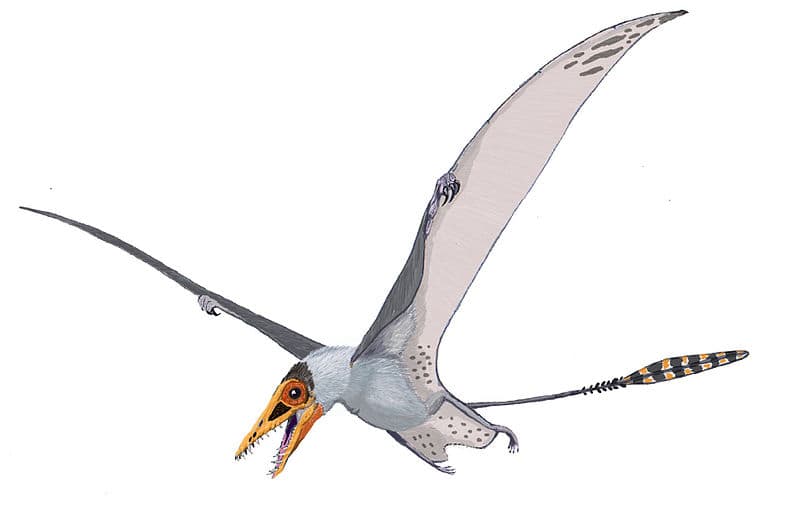
The Pterodactyl may refer to members of the genus Pterodactylus, and more broadly to members of the suborder Pterodactyloidea of the pterosaurs.
There were two major types of pterosaurs. Basal pterosaurs (also called ‘non-pterodactyloid pterosaurs’) were smaller animals with fully-toothed jaws and, typically, long tails. They would have had an awkward sprawling posture on the ground but the anatomy of their joints and strong claws would have made them effective climbers. Later pterosaurs are called pterodactyloid — or pterodactyls. They evolved in many sizes, shapes, and lifestyles.
So when you hear the word ‘pterodactyl’, keep in mind — if it’s a paleontologist, they’re likely referring to a specific group of pterosaurs. If it’s someone else, they’re probably referring to pterosaurs with an incorrect term.
This being said, let’s look at some examples of ‘flying dinosaurs’ — or rather, flying dinosaur-age reptiles.
Pteranodon: The Iconic Sky King
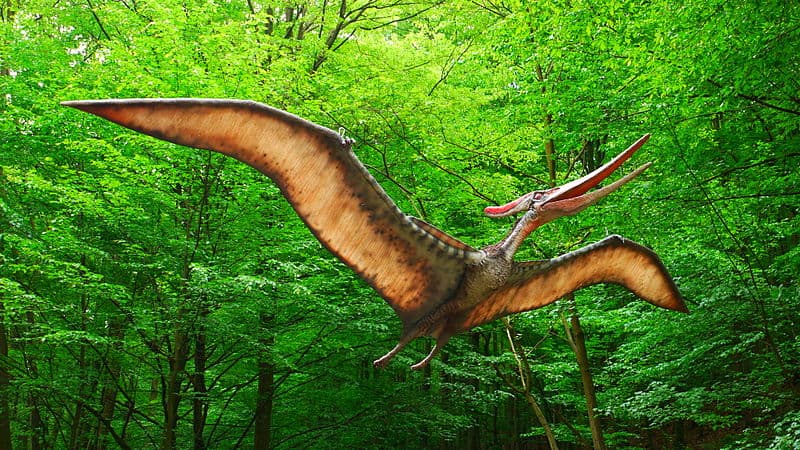
When you hear “flying dinosaur,” your mind probably races to the Pteranodon. With its distinctive crest and long beak, it’s an image many of us grew up with. This fascinating creature had a wingspan of around 18 feet—almost as long as a car.
It’s not just the wingspan that made Pteranodons exceptional. They had hollow bones and a large keel-like breastbone, features that made them lighter and more aerodynamic. Their unique build allowed them to launch from a standstill, and glide effortlessly through the air.
The name “Pteranodon” translates to “winged and toothless.” This is fitting because one of Pteranodon’s distinguishing characteristics is its lack of teeth. Pteranodon lived during the Late Cretaceous period, around 85 to 84 million years ago. It’s one of the most iconic and widely recognized pterosaurs, often featuring in popular culture depictions of prehistoric life. If you want to refer to a ‘flying dinosaur’, the Pteranodon is the closest to it.
Pterodactylus: Not Just a Pretty Name
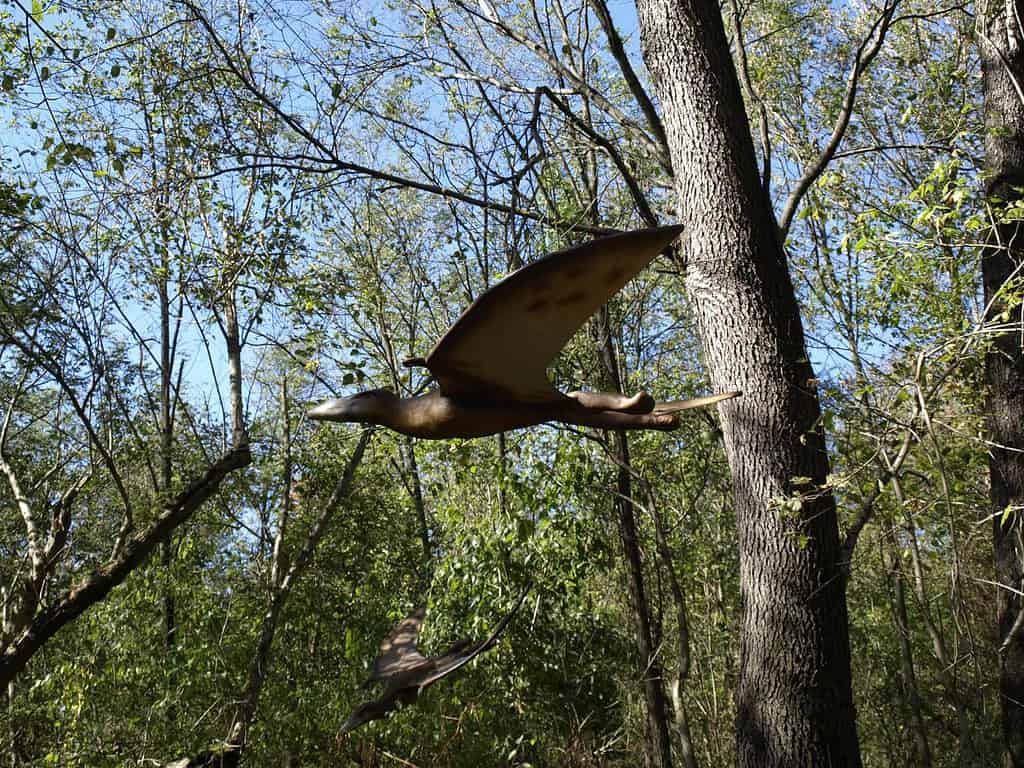
Often confused with Pteranodons, pterodactyls are another well-known member of the pterosaur family. The term “pterodactyl” is often used as a catch-all for all pterosaurs, as outlined earlier, but it’s actually a specific genus—Pterodactylus.
“Pterodactylus” translates to “winged finger,” which describes its large wing formed by a skin and muscle membrane stretching from its elongated fourth finger to its body.
Pterodactyls were generally smaller than Pteranodons, with a wingspan averaging about 3.5 feet. Despite their smaller size, they were incredibly versatile. Some scientists even speculate that these reptiles could hover, much like a hummingbird, though this remains a topic of debate.
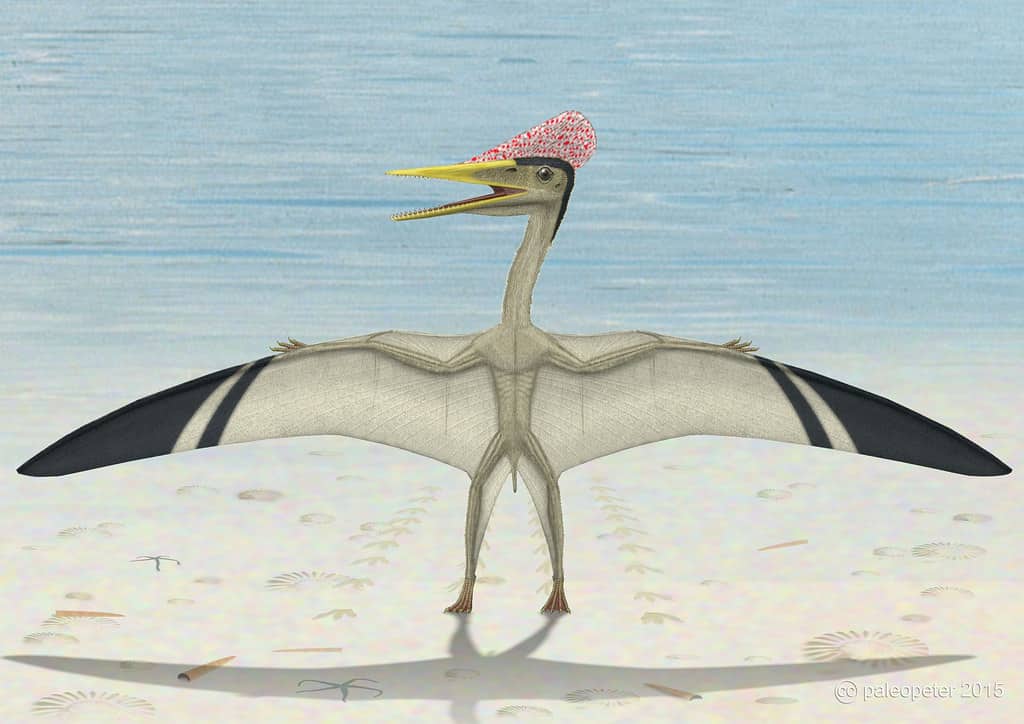
Fossils of Pterodactylus are primarily found in what is now Germany, in areas that were once shallow coastal environments. This suggests that it would have been frequently seen skimming over calm seas or coastlines hunting for food.
The term “pterodactyl” has often been used in popular culture as a generic name for all pterosaurs, but it’s important to note that Pterodactylus is just one specific genus within the broader group of pterosaurs. Its importance in the history of paleontology and its iconic status makes it a frequent reference point for discussions about flying reptiles.
As with other pterosaurs, Pterodactylus is not a dinosaur but a distinct group of flying reptiles that lived alongside dinosaurs during the Mesozoic Era.
Quetzalcoatlus
Quetzalcoatlus is named after “Quetzalcoatl”, the feathered serpent god from Aztec mythology. This name reflects the creature’s grandeur and its wings that resemble feathers.
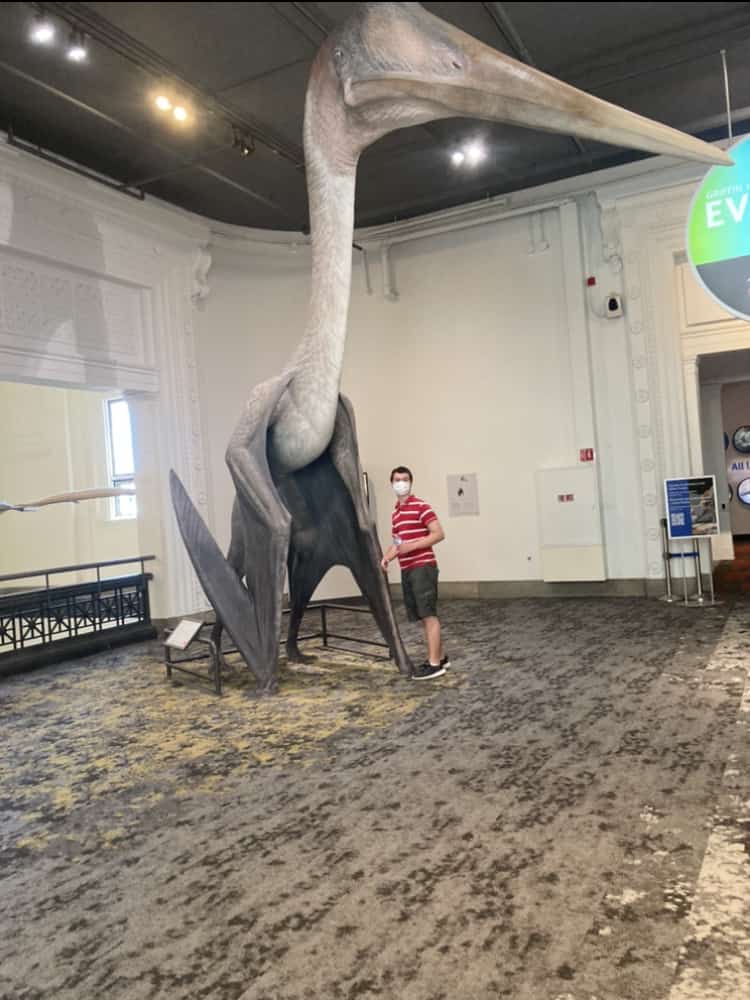
This winged reptile has an impressive wingspan. When it was first named as a new species in 1975, scientists estimated its wingspan of 15.9 m (52 ft). Further models suggest a somewhat smaller wingspan, but nonetheless, the Quetzalcoatlus stood tall and wide.
Researchers now believe that there were two different Quetzalcoatlus species — one of which was larger, and the other of which was smaller — but still larger than a human. Quetzalcoatlus is one of the largest known flying animals of all time, if not the largest.
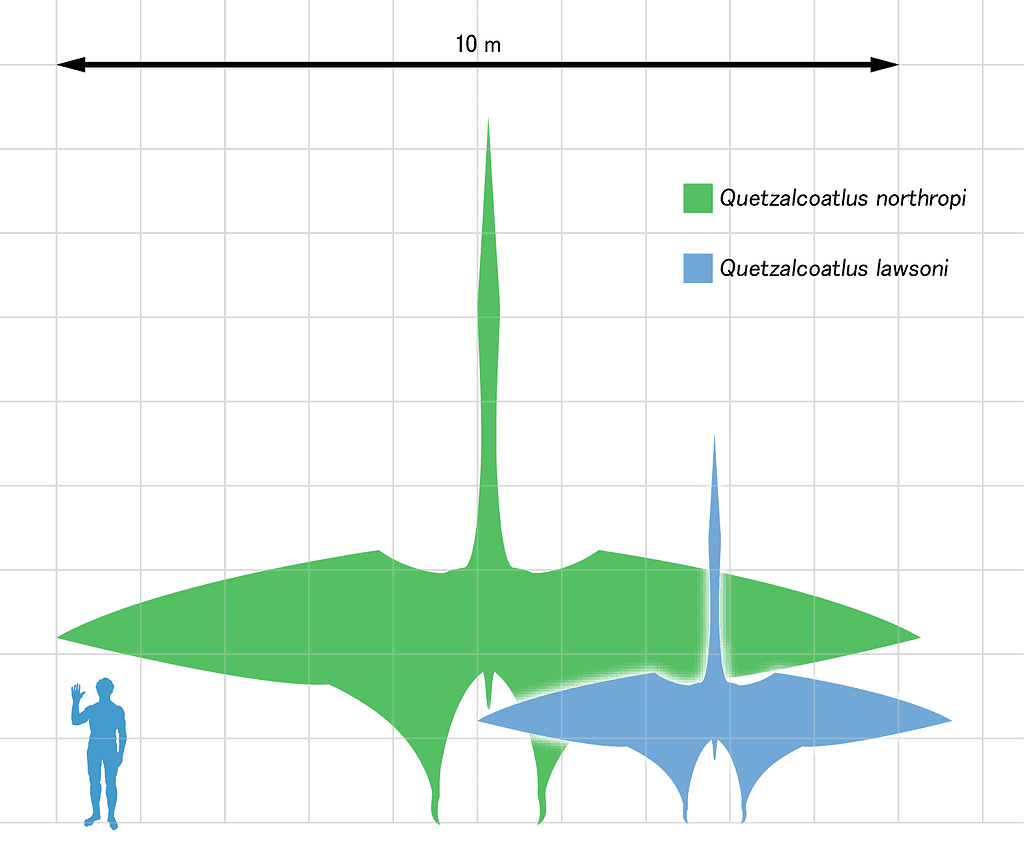
Apart from its vast wingspan, Quetzalcoatlus had a long, pointed beak and a long neck. Its legs were also elongated, suggesting that it was a proficient walker when on the ground. Despite its massive size, its skeletal structure was lightweight to facilitate flight.
While the exact diet of Quetzalcoatlus is still debated, some paleontologists believe it may have been a carnivore that scavenged for carrion on land, similar to modern-day vultures. Others suggest it could have hunted for fish or other small animals.
“Some people said it was a carrion feeder, some people said it flew over the water and plucked fish like a pelican. Those things don’t work,” Padian said.
“The jaws are very long and thin, tapering to a point. And if you look at a heron or egret’s jaws, they’re the same — good for plucking lizards and other small game, but definitely not carcass-scavenging. It had no teeth.”
“This animal could raise its head and neck vertically, so as to swallow the small prey it seized with its jaws. It could lower the great head far below the horizontal, so if it were cruising above dry land, it might have been able to swoop down and pluck an unsuspecting animal,” Padian said.
“Walking about on land, it could move its head and neck to an arc of 180 degrees, capable of full vision all around it.”
Quetzalcoatlus is significant not only because of its massive size but also due to what it tells us about the capabilities of flight in large animals. Its existence has spurred research and debate regarding how such large creatures took flight, how they maintained it, and what their lifestyle might have been like.
If you’re looking for an imposing ‘flying dinosaur’, Quetzalcoatlus is the one.
Dimorphodon
This early pterosaur had a large head relative to its body and short wings, suggesting it might have been a nimble flyer that maneuvered through forests.
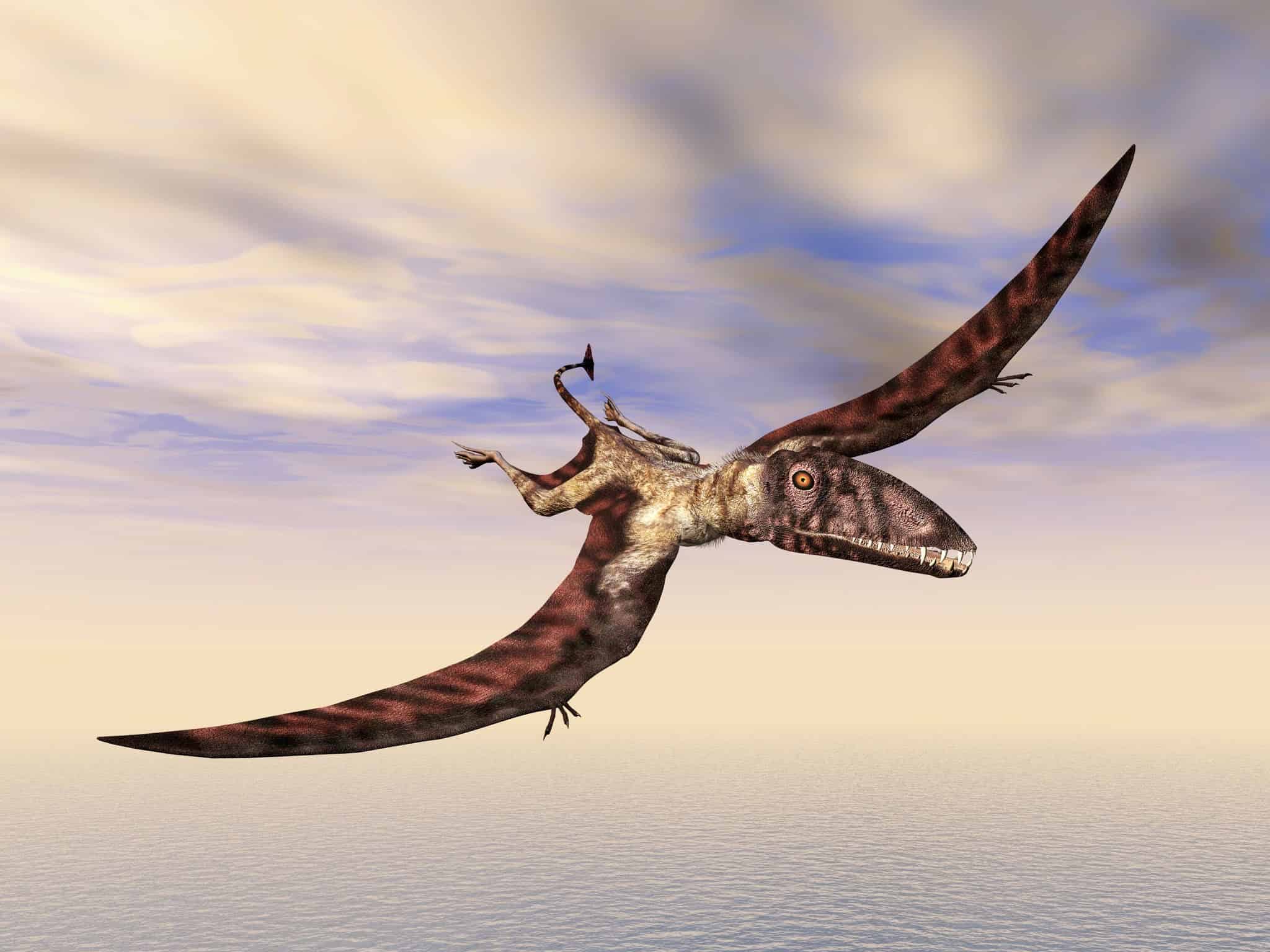
The name “Dimorphodon” translates to “two-form tooth,” referring to the fact that this pterosaur had two distinct types of teeth in its jaws, which is unusual among pterosaurs. Dimorphodon lived during the Early Jurassic period, approximately 190 to 180 million years ago. It is a much earlier pterosaur than most of the creatures on this list.
Dimorphodon had a large head in proportion to its body, with deep jaws filled with sharp teeth. The front teeth were long and fang-like, while the rear teeth were shorter and more robust. It also had a long tail with a diamond-shaped flap or vane at the end, which may have aided in steering during flight. Its wings were relatively short and broad. Many depictions give it a speculative puffin head, because the pterosaur has some similarities to a puffin.
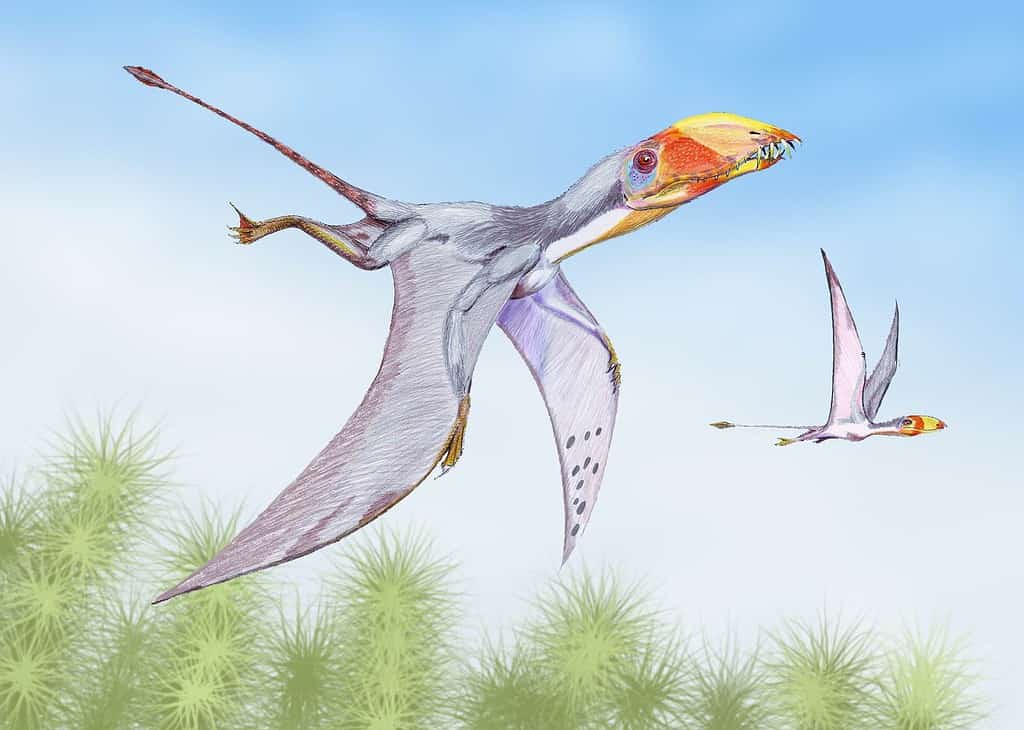
Dimorphodon was one of the first pterosaurs to be discovered and described. The paleontologist Richard Owen, who also coined the term “dinosaur,” first described it in the 19th century.
This is an early-day ‘flying dinosaur’ — one that contradicts many of the common characteristics of pterosaurs.
Tapejara
Tapejara is an important pterosaur for multiple reasons. Its striking crest provides a glimpse into the diversity and possible display behaviors of pterosaurs. The quality of some Tapejara fossils, particularly those from Brazil’s Santana Formation, has allowed for detailed studies of its anatomy and even the patterns and structures of its soft tissues and wing membranes.
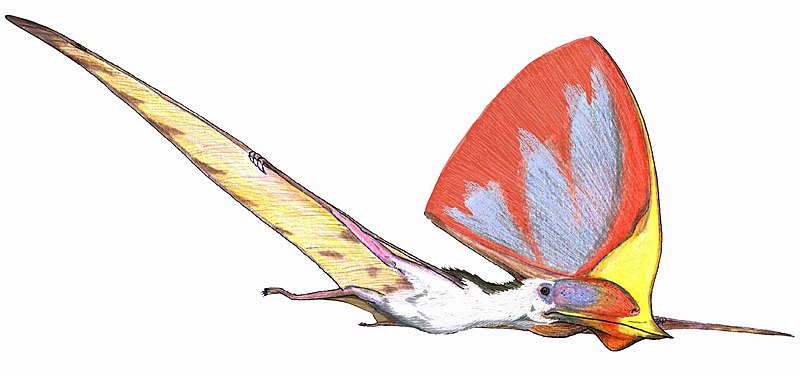
Tapejara is a genus of Brazilian pterosaur from the Cretaceous: Recognized by its pronounced crest, which might have been used for display or steering during flight, this flying reptile shows just how diverse pterosaurs really were.
The fossils of Tapejara have been found in the Santana Formation in Brazil, which was a coastal environment during the Early Cretaceous period. This suggests that Tapejara likely inhabited coastal regions, possibly nesting or resting on cliffs and hunting over the ocean or nearby lagoons.
Dorygnathus
The name “Dorygnathus” translates to “spear jaw,” referring to the elongated, pointed teeth at the front of its jaw.
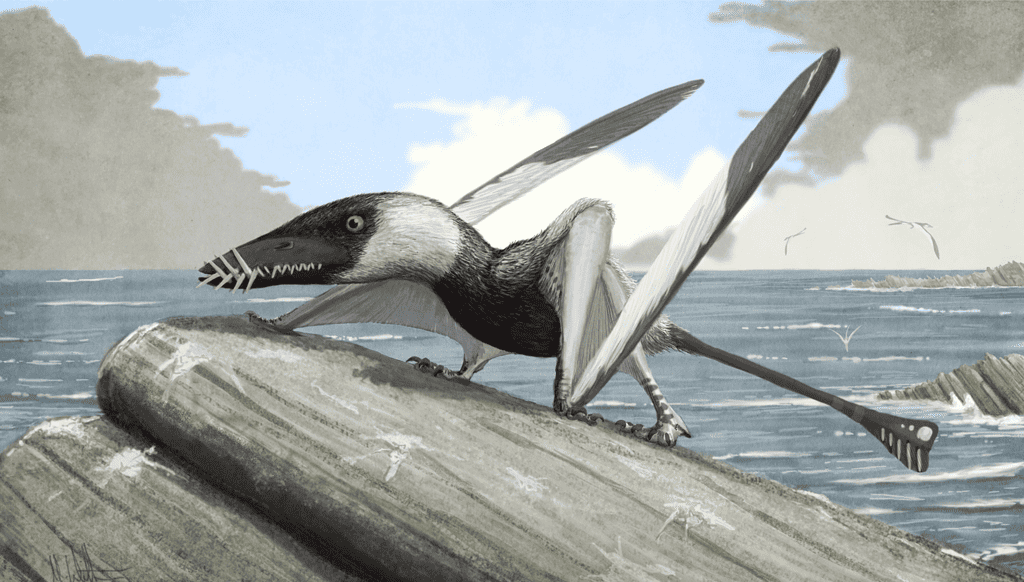
Dorygnathus had a short, robust snout and is particularly notable for its teeth. The front teeth were long, slender, and curved, while the teeth at the back of the jaw were smaller and more vertical. The exact function of these long teeth is still debated, but they might have been used to catch and grip slippery prey like fish.
Dorygnathus is a significant pterosaur for several reasons. Firstly, its unique dental arrangement offers insights into the dietary habits and predatory techniques of early pterosaurs. Additionally, its fossils provide valuable data about the diversity and evolution of pterosaurs during the Jurassic period, helping to bridge gaps in our understanding of their evolutionary history.
Cearadactylus
Imagine a pelican, but it’s actually a reptile and bigger. Cearadactylus had a wingspan estimated to be around 5.5 meters (roughly 18 feet), making it a relatively large pterosaur and a pronounced, impressive jaw.

Cearadactylus was first described in the 1980s based on a fossil specimen found in Brazil’s Santana Formation. This formation is well-known for its exceptionally well-preserved fossils, many of which retain impressions of soft tissues.
Like other pterosaurs, Cearadactylus was not a dinosaur but a member of a distinct group of flying reptiles that lived alongside dinosaurs during the Mesozoic Era. The variety in size, form, and function among pterosaurs like Cearadactylus illustrates the dynamic and diverse ecosystems of their time.
Flying reptiles
These are just a few of the many known pterosaurs. Plenty of others have been described, and possibly even more have not been discovered yet. Sadly, like many incredible creatures of the past, the pterosaurs met an untimely end. The same event that led to the extinction of most dinosaurs—likely a meteorite impact—also wiped out these fantastic flyers.
Though pterosaurs may have vanished, they’ve left a lasting legacy. Every time you see a bird soar across the sky, you’re witnessing the modern evolution of the ancient art of flight, a talent that pterosaurs had mastered long before.
Pterosaurs are not related to birds, but their legacy reminds us of the incredible biodiversity that our planet once hosted. They soared through ancient skies, carving their place in the world, and standing as testaments to nature’s boundless imagination. From the smaller Dimorphodon to the majestic Quetzalcoatlus, each species had its unique role in the prehistoric ecosystem.


